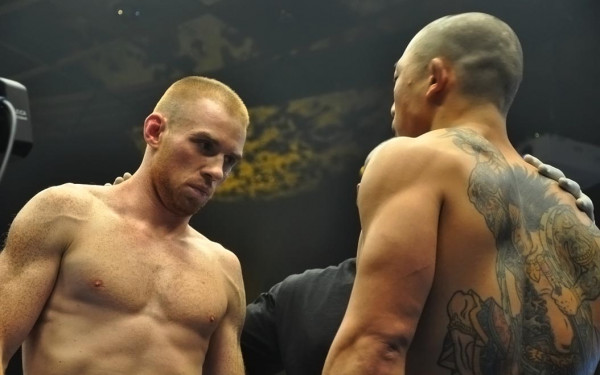Got Gatka?
Sikh Traditional Martial Art Being Revived as a Sport
Swords clash, sticks meet and battles take place in front of audiences as they watch awe-inspiring Gatka—the Sikhs’ traditional martial art form.
While it is generally shown for public display, usually during religious procession, the ancient martial art is being popularized and revived as a sport across the globe. In these public displays, robed men and women dressed in traditional attire combat fiercely as they showcase their technical abilities.
Some spectators fear for the martial artists’ safety, while others are simply spellbound by the sportsmanship and talent displayed. A closer examination shows that there is more than technical ability to this martial art— there exists a specified order and coordination with the martial artist’s body during his/her attacking motions with carefully followed rhythms and motions.
Gatka is a martial art that originated in northern India, and was used mainly by the followers of the Sikh religion to defend the local people against Moghul oppression in South East Asia in the 17th century. It is believed that the Sikhs would use this ancient form of combat to fight opponents outnumbering them five to one.
But how can one person be able to defend him/herself from five people?
“Fluidity is really important in this art, as every move is calculated to start with an attack and end with a defensive pose in one motion,” said Gurcharan Singh, who teaches Gatka in Ontario.
The martial art streamlines each move to be as efficient as possible and demands great physical control of the weapon. This efficiency “reduces the reload time,” as Singh mentioned, and keeps a continuous flow of attack and defence.
“It takes a lot of mental strength to be able to maintain the coordination required to keep the pace of Gatka,” said Gurcharan.
As a result, Gatka emphasizes and puts a special focus on mental training in addition to the physical training of handling and learning the techniques to yield a weapon.
“This sport is a method to maintain a discipline. We are all in a battle to control our minds, whether it is anger, greed, or other negative emotions, and sports, in general, help us achieve this.”
—Balwant Singh,
Gatka instructor
Today, Gatka is rarely used in combat and evolved into a sport out of sword practice in the British Indian Army during the 1880s. The sport was heavily influenced by other combat sports, especially fencing.
A single match—or fight—is played between two opponents who spar with wooden shafts or cudgels intended to simulate swords. Sometimes the sticks are paired with a shield.
In North America, the major Gatka competition is the annual “Yudh Gatka Tournament” held across the continent. The Tournament features duels between competing players who alternate between offence and defence. Each fight is three minutes long and points are awarded for striking the opponent—with no intention to hurt them—using a wooden sword called the “soti.”
A hit to the lower body rewards the offensive player with one point. Hits to the upper torso are two points and hits to the back and head result in three points. A hit must be clear to the body, head, arms, legs or the feet of the opponent. Any hits to the face/ears or hits in attempts to injure result in a foul.
“Before even touching a weapon, a student is first taught the correct step methods and body movements,” said Gurcharan, noting many students are eager to pick up weapons to fight. “This in itself takes a very long time, and I know many students often feel frustrated that they’re not fighting with weapons. However, it is crucial that the students know the motions before even touching a weapon.”
Both males and females can partake in the sport, but it is mandatory that the combat skills be used only in self-defence.
“This sport is a method to maintain a discipline,” said Balwant Singh, a junior instructor at the Fateh Singh Gatka Akhara school in London, England. “We are all in a battle to control our minds, whether it is anger, greed, or other negative emotions, and sports, in general, help us achieve this.”
With the growing demand for Gatka instruction, it seems many people are looking to Gatka to learn the discipline, improve their self-defence skills and maintain healthier lifestyles. As a result, many new Gatka schools have begun to spring up across the country. However, for any interested Montrealers, none exist in the city as of yet.
This article originally appeared in Volume 31, Issue 15, published November 23, 2010.

__900_573_90.jpg)
_600_832_s.png)

__600_375_90_s_c1.jpg)
6__600_375_90_s_c1.jpg)
